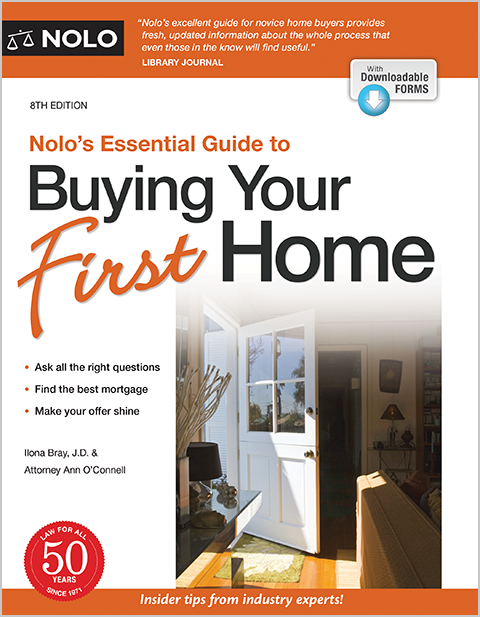If selling your South Dakota home and property you will, according to state law, need to disclose in writing various property defects that could affect its real estate market value.
If you are selling your South Dakota home, prepare for a process that's paperwork intensive. You will, by state law, need to disclose in writing various property defects that could affect your house and property's value. Nevertheless, there is value in advising buyers of issues, whether they include a busted plumbing system or an unsteady foundation. If you're planning to sell your South Dakota home, what must you disclose, and when?
Disclosure Laws in South Dakota for Real Estate Sellers
The legal basis for South Dakota's disclosure requirement is South Dakota Stat. § 43-4-37 et seq., which mandates that sellers of residential real property "furnish to a buyer a completed copy of the disclosure statement before the buyer makes a written offer." Moreover, a seller who becomes aware of any other conditions requiring disclosure between giving the buyer the statement and closing on the transaction must amend that statement in writing.
In some states, real estate agents and attorneys are left to their own devices to draft disclosure forms that fit the legislation. In South Dakota, the legislature has done this work already, codifying the entire disclosure form in South Dakota Stat. § 43-4-44.
You might want to provide prospective buyers with the completed form sooner rather than later, given that buyers can terminate the sale within three days of personally receiving the disclosure statement or amendment, under South Dakota Stat. § 43-4-39. That time period changes to six days if the disclosure statement or amendment is sent by mail.
What Issues or Defects Does the South Dakota Real Estate Disclosure Form Cover?
The South Dakota Department of Labor and Regulation has created a standard seller property condition disclosure statement mirroring the language of the statute, which you, as a home seller, must fill out. You will see that you must certify that the information presented is accurate as of the date you sign the form, and that the buyer must also sign (as proof of having actually received it).
The form has over 100 questions divided into different sections. First, you will answer questions about the property itself—such as its address, how long you've owned it, whether there have been boundary surveys, and whether you are aware of any easements or liens on it.
Next, you'll answer questions about the condition of various aspects of the home: its roof, attic, plumbing, basement, and sewers, to name a handful. For each, you must state—by checking "Yes", "No", or "Do Not Know," or "N/A" (not applicable)—whether there are any material facts that buyers should know about that element of the home. You'll need to indicate whether various systems are working, and alert buyers to the existence of hazardous conditions such as asbestos, methane gas, radon, or buried fuel tanks.
Importantly, the form also contains an "Other" clause; a catchall, asking "Are you aware of any other material facts which have not been disclosed on this form?". This signals that your task is to make full disclosure to the buyer, not to hide behind any missing question on the form.
The form encourages sellers to attach additional information or pages, should you need to explain any responses in more detail. This can be especially useful if you want to alert potential buyers to a known defect (and thus comply with the statute), but note that the defect is relatively minor (and thus reassure the buyer).
Why Should You Be Thorough and Honest In Making Disclosures About Your South Dakota Home?
Every real estate seller wants to make the house seem as beautiful and perfect as possible, in order to fetch the highest possible price. But South Dakota draws a line between painting your walls with a fresh coat before an open house and deliberately lying on your property disclosure statement.
According to South Dakota Stat. § 43-4-42, a seller who makes misrepresentations or omissions on a disclosure statement "is liable to the buyer for the amount of the actual damages and repairs suffered...as a result of the violation or failure." Not only that, but if the buyer sues, "the court may award costs and attorney fees to the prevailing party." In plain English, this means that not only would you need to reimburse the buyer for the costs of remediation, but could also end up paying your buyer's attorney if the buyer successfully sues you! Legal fees can be significant, thus this serves as both a warning and punishment to sellers who attempt to act in bad faith.
By the same token, the legislature has protected you from liability for any defect that you disclose. South Dakota Stat. § 43-4-40 states that home sellers are not liable for a defect or other condition in the property if they truthfully complete the disclosure statement. The legislators are serious about your truthfulness, though, and require sellers to "make each disclosure in good faith."
In short, you are better off making the necessary disclosures in a full and forthright manner, rather than letting your homebuyer discover problems down the road and begin pointing fingers in your direction.
For More Information
If you're uncertain about whether you should disclose a particular issue and how to describe it truthfully but not hurt your ability to sell the home, consult your real estate agent or an attorney.
Talk to a Lawyer
Need a lawyer? Start here.
How it Works
- Briefly tell us about your case
- Provide your contact information
- Choose attorneys to contact you
- Briefly tell us about your case
- Provide your contact information
- Choose attorneys to contact you


